| |
|
|
Efficient Risk Estimation via Nested Sequential
Simulation
by M. Broadie, Y. Du and C. Moallemi
Management Science,
2011, Vol. 57, No. 6, pp. 1172-1194.
Abstract: We analyze the computational problem of estimating financial risk in a
nested simulation. In this approach, an outer simulation is used to
generate financial scenarios and an inner simulation is used to estimate
future portfolio values in each scenario. We focus on one risk measure,
the probability of a large loss, and we propose a new algorithm to estimate
this risk. Our algorithm sequentially allocates computational effort in the
inner simulation based on marginal changes in the risk estimator in each
scenario. Theoretical results are given to show that the risk estimator has
a faster convergence order compared to the conventional uniform inner
sampling approach. Numerical results consistent with the theory are
presented. |
 |
Click
here for pdf file |
| |
|
|
Managing Corporate Liquidity: Strategies and Pricing Implications
by A. Asvanunt, M.
Broadie and S. Sundaresan
International Journal
of Theoretical and Applied Finance, 2011, Vol.14, No.3,
369-406.
Abstract: Defaults arising from illiquidity can lead to private workouts, formal bankruptcy proceedings or even liquidation. All these outcomes can result in deadweight losses. Corporate illiquidity in the presence of realistic capital market frictions can be managed by a) equity dilution, b) carrying positive cash balances, or c) entering into loan commitments with a syndicate of lenders. An efficient way to manage illiquidity is to rely on mechanisms that transfer cash from ``good states'' into ``bad states'' (i.e., financial distress) without wasting liquidity in the process. In this paper, we first investigate the impact of costly equity dilution as a method to deal with illiquidity, and characterize its effects on corporate debt prices and optimal capital structure. We show that equity dilution produces lower firm value in general. Next, we consider two alternative mechanisms: cash balances and loan commitments. Abstracting from future investment opportunities and share re-purchases, which are strong reasons for corporate cash holdings, we show that carrying positive cash balances for managing illiquidity is in general inefficient relative to entering into loan commitments, since cash balances a) may have agency costs, b) reduce the riskiness of the firm thereby lowering the option value to default, c) postpone or reduce dividends in good states, and d) tend to inject liquidity in both good and bad states. Loan commitments, on the other hand, a) reduce agency costs, and b) permit injection of liquidity in bad states as and when needed. Then, we study the trade-offs between these alternative approaches to managing corporate illiquidity. We show that loan commitments can lead to an improvement in overall welfare and reduction in spreads on existing debt for a broad range of parameter values. We derive explicit pricing formulas for debt and equity prices. In addition, we characterize the optimal draw down strategy for loan commitments, and study its impact on optimal capital structure. |
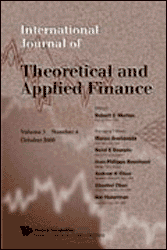 |
Click
here for pdf file |
| |
|
|
Understanding
Index Option Returns
by M.
Broadie, M. Chernov and M. Johannes
Review
of Financial Studies, 2009, Vol.22, No.11,
4493-4529.
Abstract: Previous research concludes that options
are mispriced based on the high average returns, CAPM alphas, and
Sharpe ratios of various put selling strategies. One criticism of
these conclusions is that these benchmarks are ill-suited to handle
the extreme statistical nature of option returns generated by nonlinear
payoffs. We propose an alternative way to evaluate the statistical
significance of option returns by comparing historical statistics
to those generated by well-accepted option pricing models. The most
puzzling finding in the existing literature, the large returns to
writing out-of-the-money puts, are not inconsistent (i.e., are statistically
insignificant) relative to the Black-Scholes model or the Heston
stochastic volatility model due to the extreme sampling uncertainty
associated with put returns. This sampling problem can largely be
alleviated by analyzing market-neutral portfolios such as straddles
or delta-hedged returns. The returns on these portfolios can be
explained by jump risk premia and estimation risk. |
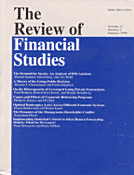 |
Click
here for pdf file |
| |
|
|
|
The
Effect of Jumps and Discrete Sampling on Volatility and Variance
Swaps
by M.
Broadie and A. Jain
International Journal
of Theoretical and Applied Finance, 2008, Vol.11, No.8,
761-797.
Abstract:
We investigate the effect of discrete
sampling and asset price jumps on fair variance and volatility swap
strikes. Fair discrete volatility strikes and fair discrete variance
strikes are derived in different models of the underlying evolution
of the asset price: the Black-Scholes model, the Heston
stochastic volatility model, the Merton jump-diffusion model and
the Bates and Scott stochastic volatility and jump model. We determine
fair discrete and continuous variance strikes analytically and fair
discrete and continuous volatility strikes using simulation and
variance reduction techniques and numerical integration techniques
in all models. Numerical results show that the well-known
convexity correction formula may not provide a good approximation
of fair volatility strikes in models with jumps in the underlying
asset. For realistic contract specifications and model parameters,
we find that the effect of discrete sampling is typically small
while the effect of jumps can be significant.
|
 |
Click
here for pdf file (working paper with corrections) |
| |
|
|
|
Growth
Options and Optimal Default under Liquidity Constraints: The Role
of Corporate Cash Balances
by A.
Asvanunt, M. Broadie and S. Sundaresan
Columbia University working paper.
Abstract:
In this paper, we develop a structural
model that captures the interaction between the cash balance and
investment opportunities for a firm that has already some debt outstanding.
We consider a firm whose assets produce a stochastic cash flow stream.
The firm has an opportunity to expand its operations, which we call
a growth option. The exercise cost of the growth option can be financed
either by cash or costly equity issuance. In absence of cash, we
derive implicit solutions for equity and debt prices when the option
is exercised optimally, under both firm value and equity value maximization
objectives. We characterize the optimal exercise boundary of the
option, and its impact on the optimal capital structure and the
debt capacity of the firm. Next, we develop a binomial lattice method
to investigate the interaction between cash accumulation and the
growth option. In this framework, the firm optimally balances the
payout of dividends with the buildup of a cash balance to finance
the growth option in the ``good states'' (i.e., high asset value
states), and to provide liquidity in the ``bad states'' (i.e., low
asset value states). We provide a complete characterization of the
firm's strategy in terms of its investment and dividend policy.
We find that while the ability to maintain a cash balance does not
add significant value to the firm in absence of a growth option,
it can be extremely valuable when a growth option is present. Finally,
we demonstrate how our method can be extended to firms with multiple
growth options.
|
|
Click
here for pdf file |
| |
|
|
|
Implications
of Heavy Tails on Simulation-Based Ordinal Optimization
by M.
Broadie, M. Han and A. Zeevi
Proceedings of the 2007 Winter
Simulation Conference, eds: S.G. Henderson, B. Biller, M.-H.
Hsieh, J. Shortle, J.D. Tew, and R.R. Barton, The Society for Computer
Simulation, 439-447.
Abstract:
We consider the problem of selecting
the best system using simulation-based ordinal optimization. This
problem has been studied mostly in the context of light-tailed distributions,
where both Gaussian-based heuristics and asymptotically optimal
procedures have been proposed. The latter rely on detailed knowledge
of the underlying distributions and give rise to an exponential
decay of the probability of selecting the incorrect system. However,
their implementation tends to be computationally intensive. In contrast,
in the presence of heavy tails the probability of selecting the
incorrect system only decays polynomially, but this is achieved
using simple allocation schemes that rely on little information
of the underlying distributions. These observations are illustrated
via several numerical experiments and are seen to be consistent
with asymptotic theory.
|
|
Click
here for pdf file |
| |
|
|
|
Recent
Advances in Simulation for Security Pricing
by P.
Boyle, M. Broadie, and P. Glasserman
Proceedings of the 1995 Winter
Simulation Conference, eds: Alexopoulos, Kang, Lilegdon,
and Goldsman, The Society for Computer Simulation, San Diego, CA,
212-219. This paper was selected as a landmark paper in the four
decades of the Winter Simulation Conference and was reprinted in
Proceedings
of the 2007 Winter Simulation Conference, eds: S.G. Henderson,
B. Biller, M.-H. Hsieh, J. Shortle, J.D. Tew, and R.R. Barton, The
Society for Computer Simulation.
Abstract:
Computational methods pay an important
role in modern finance. Through the theory of arbitrage-free pricing,
the price of a derivative security can be expressed as the expected
value of its payouts under a particular probability measure. The
resulting integral becomes quite complicated if there are several
state variables or if payouts are path-dependent. Simulation has
proved to be a valualbe tools for the calculations. This paper summarizes
some of the recent applications and developments of the Monte Carlo
method to security pricing problems.
|
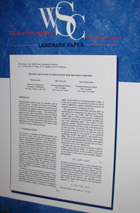 |
Click
here for pdf file |
| |
|
|
|
Improved
Lower and Upper Bound Algorithms for Pricing American Options by
Simulation
by M.
Broadie and M. Cao
Quantitative Finance,
2008, Vol.8, No.8, 845-861.
Abstract:
This paper introduces new variance reduction
techniques and computational improvements to Monte Carlo methods
for pricing American-style options. For simulation algorithms that
compute lower bounds of American option values, we apply martingale
control variates and introduce the local policy enhancement,
which adopts a local simulation to improve the exercise policy.
For duality-based upper bound methods, specifically the primal-dual
simulation algorithm (Andersen and Broadie 2004), we have developed
two improvements. One is sub-optimality checking, which saves
unnecessary computation when it is sub-optimal to exercise the option
along the sample path; the second is boundary distance
grouping, which reduces computational time by skipping computation
on selected sample paths based on the distance to the exercise boundary.
Numerical results are given for single asset Bermudan options, moving
window Asian options and Bermudan max options. In some examples
the computational time is reduced by a factor of several hundred,
while the confidence interval of the true option value is considerably
tighter than before the improvements.
|
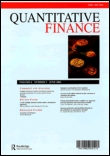 |
Click
here for pdf file of the working paper |
| |
|
|
|
Pricing
and Hedging Volatility Derivatives
by M.
Broadie and A. Jain
Journal of Derivatives,
2008, Vol.15, No.3, 7-24.
Abstract:
This paper studies the pricing and hedging
of variance swaps and other volatility derivatives, including volatility
swaps and variance options, in the Heston stochastic volatility
model. Pricing and hedging results are derived using partial differential
equation techniques. We formulate an optimization problem to determine
the number of options required to best hedge a variance swap. We
propose a method to dynamically hedge volatility derivatives using
variance swaps and a finite number of European call and put options.
|
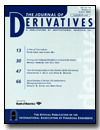 |
Click
here for pdf file |
| |
|
|
|
Model
Specification and Risk Premia: Evidence from Futures Options
by M.
Broadie, M. Chernov and M. Johannes
Journal of Finance,
2007, Vol.62, No.3, 1453-1490.
Abstract:
This paper examines model specification issues and estimates diffusive
and jump risk premia using S&P futures option prices from 1987
to 2003. We first develop a time series test to detect the presence
of jumps in volatility, and find strong evidence in support of their
presence. Next, using the cross section of option prices, we find
strong evidence for jumps in prices and modest evidence for jumps
in volatility based on model fit. The evidence points toward economically
and statistically significant jump risk premia, which are important
for understanding option returns.
|
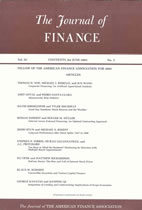 |
Click
here for pdf file |
| |
|
|
|
Optimal
Debt and Equity Values in the Presence of Chapter 7 and Chapter
11
by M.
Broadie, M. Chernov and M. Sundaresan
Journal of Finance,
2007, Vol.62, No.3, 1341-1377.
Abstract:
In a contingent claims framework with a single issue of debt and
full information, we show that the presence of a bankruptcy code
with automatic stay, absolute priority rules, and potential debt
forgiveness, can lead to significant conflicts of interest between
borrowers and lenders. In the first best outcome (i.e., firm value
maximization subject to limited liability requirements), the bankruptcy
code can add significant value to both parties by way of higher
debt capacity, lower credit spreads, and improvement in the overall
value of the firm. If control of the ex-ante timing of entering
into bankruptcy and the ex-post decision to liquidate once the firm
goes into bankruptcy is given to equity holders, most of the benefits
of the code are appropriated by the equity holders at the expense
of the debt holders. In our results the debt holders can restore
the first best outcome, in large measure, by seizing this control
or by
the ex-post transfer of control rights which allows them to decide
when to liquidate the firm that has been taken to the Chapter 11
process by the equity holders. Irrespective of who is in control
of the bankruptcy and liquidation decision, our model implies, based
on the term structure of probabilities of default and liquidation,
that firms are more likely to default on average and are less likely
to liquidate on average relative to the benchmark model of Leland
(1994).
|
 |
Click
here for pdf file |
| |
|
|
|
A
Binomial Lattice Method for Pricing Corporate Debt and Modeling
Chapter 11 Proceedings
by M.
Broadie and O. Kaya
Journal of Financial and Quantitative
Analysis, 2007, Vol.42, No.2, 279-312.
Abstract:
The pricing of corporate debt is still a challenging and active
research area in corporate finance. Starting with Merton (1974),
many authors proposed a structural approach in which the value of
the assets of the firm is modeled by a stochastic process, and all
other variables are derived from this basic process. These structural
models have become more complex over time in order to capture more
realistic aspects of bankruptcy proceedings. The literature in this
area emphasizes closed-form solutions that are
derived by either PDE methods or analytical pricing techniques.
However, it is not always possible to build a comprehensive model
with realistic model features and achieve a closed-form solution
at
the same time. In this paper, we develop a binomial lattice method
that can be used to handle complex structural models such as ones
that include Chapter 11 proceedings of the U.S. bankruptcy code.
Although lattice methods have been widely used in the option pricing
literature, they are relatively new in corporate debt pricing. In
particular, the limited liability requirement of the equityholders
needs to be handled carefully in this context. Our method can be
used to solve the Leland (1994) model and its extension to the finite
maturity case, the more complex model of Broadie, Chernov and
Sundaresan (2007).
|
 |
Click
here for pdf file |
| |
|
|
|
Exact
Simulation of Stochastic Volatility and other Affine Jump Diffusion
Processes
by M.
Broadie and O. Kaya
Operations
Research, 2006, Vol.54, No.2, 217-231.
Abstract:
The stochastic differential equations for affine jump diffusion
models do not yield exact solutions that can be directly simulated.
Discretization methods can be used for simulating
security prices under these models. However, discretization introduces
bias into the simulation results and a large number of time steps
may be needed to reduce the discretization bias to an
acceptable level. This paper suggests a method for the exact simulation
of the stock price and variance under Heston's stochastic volatility
model and other affine jump diffusion processes. The
sample stock price and variance from the exact distribution can
then be used to generate an unbiased estimator of the price of a
derivative security. We compare our method with the more
conventional Euler discretization method and demonstrate the faster
convergence rate of the error in our method. Specifically, our method
achieves an O(1/s^{1/2}) convergence rate, where s is the
total computational budget. The convergence rate for the Euler discretization
method is O(1/s^{1/3}) or slower, depending on the model coefficients
and option payoff function.
|
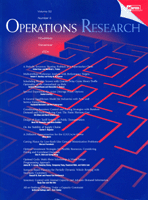 |
Click
here for pdf file |
| |
|
|
|
A
Double-Exponential Fast Gauss Transform for Pricing Discrete Path-Dependent
Options
by M.
Broadie and Y. Yamamoto
Operations
Research, 2005, Vol.53, No.5, 764-779.
Abstract:
This paper develops algorithms for the pricing of discretely sampled
barrier, lookback and hindsight options and discretely exercisable
American options. Under the Black-Scholes framework, the pricing
of these options can be reduced to evaluation of a series of convolutions
of the Gaussian distribution and a known function. We compute these
convolutions efficiently using the double-exponential integration
formula and the fast Gauss transform. The resulting algorithms have
computational complexity of O(nN), where the number of monitoring/exercise
dates is n and the number of sample points at each date is
N, and our results show the error decreases exponentially with
N. We also extend the approach and provide results for Merton's
lognormal jump-diffusion model.
|
 |
Click
here for pdf file |
| |
|
|
|
Exact
Simulation of Option Greeks under Stochastic Volatility and Jump
Diffusion Models
by M.
Broadie and O. Kaya
Proceedings of the 2004 Winter
Simulation Conference, eds: R.G. Ingalls, M.D. Rossetti,
J.S. Smith, and B.A. Peters, The Society for Computer Simulation,
1607-1615.
Abstract:
This paper derives Monte Carlo simulation estimators to compute
option price derivatives, i.e., the 'Greeks,' under Heston's stochastic
volatility model and some variants of it which include jumps in
the price and variance processes. We use pathwise and likelihood
ratio approaches together with the exact simulation method of Broadie
and Kaya (2004) to generate unbiased estimates of option price derivatives
in these models. By appropriately conditioning on the path generated
by the variance and jump processes, the evolution of the stock price
can be represented as a series of lognormal random variables. This
makes it possible to extend previously known results from the Black-Scholes
setting to the computation of Greeks for more complex models. We
give simulation estimators and numerical results for some path-dependent
and path-independent options.
|
|
Click
here for pdf file |
| |
|
|
|
A
Primal-Dual Simulation Algorithm for Pricing Multi-Dimensional American
Options
by L.
Andersen and M. Broadie
Management Science,
2004, Vol. 50, No. 9, pp. 1222-1234.
Abstract:
This paper describes a practical algorithm based on Monte Carlo
simulation for the pricing of multi-dimensional American (i.e.,
continuously exercisable) and Bermudan (i.e., discretely-exercisable)
options. The method generates both lower and upper bounds for the
Bermudan option price and hence gives valid confidence intervals
for the true value. Lower bounds can be generated using any number
of primal algorithms. Upper bounds are generated using a new Monte
Carlo algorithm based on the duality representation of the Bermudan
value function suggested independently in Haugh and Kogan (2004)
and Rogers (2002). Our proposed algorithm can handle virtually any
type of process dynamics, factor structure, and payout specification.
Computational results for a variety of multi-factor equity and interest
rate options demonstrate the simplicity and efficiency of the proposed
algorithm. In particular, we use the
proposed method to examine and verify the tightness of frequently
used exercise rules in Bermudan swaption markets.
|
 |
Click
here for pdf file |
| |
|
|
|
Option
Pricing: Valuation Models and Applications
by M.
Broadie and J. Detemple
Management Science,
2004, Vol. 50, No. 9, pp. 1145-1177.
Abstract:
This paper surveys the literature on option pricing, from its origins
to the present. An extensive review of valuation methods for European-
and Amer\-ican-style claims is provided. Applications to complex
securities and numerical methods are surveyed. Emphasis is placed
on recent trends and developments in methodology and modelling.
|
 |
Click
here for pdf file |
| |
|
|
|
A
Stochastic Mesh Method for Pricing High-Dimensional American Options
by M.
Broadie and P. Glasserman
Journal
of Computational Finance, 2004, Vol.7, No.4, pp. 35-72.
Abstract:
High-dimensional problems frequently arise in the pricing of derivative
securities -- for example, in pricing options on multiple underlying
assets and in pricing term structure derivatives. American versions
of these options, i.e., where the owner has the right to exercise
early, are particularly challenging to price. We introduce a stochastic
mesh method for pricing high-dimensional American options when there
is a finite, but possibly large, number of exercise dates. The algorithm
provides point estimates and confidence intervals; we provide conditions
under which these estimates converge to the correct values as the
computational effort increases. Numerical results illustrate the
performance of the method.
|
 |
Click
here for pdf file |
|
Application
of the Fast Gauss Transform to Option Pricing
by M.
Broadie and Y. Yamamoto
Management Science,
2003, Vol. 49, No. 8, pp. 1071-1088.
Abstract:
In many of the numerical methods for pricing American options based
on the dynamic programming approach, the most computationally intensive
part can be formulated as the summation of
Gaussians. Though this operation usually requires O(NN')
work when there are N' summations to compute and the number
of terms appearing in each summation is N, we can reduce
the amount of work to O(N+N') by using a technique
called the fast Gauss transform. In this paper, we apply this technique
to the multinomial method and the stochastic mesh method, and show
by numerical experiments how it can speed up these methods dramatically,
both for the Black-Scholes model and Merton's lognormal jump-diffusion
model. We also propose extensions of the fast Gauss transform method
to models with non-Gaussian densities.
|
 |
Click
here for pdf file |
| |
|
|
|
Nonparametric
Estimation of American Option Exercise Boundaries and Call Prices
by M.
Broadie, J. Detemple, E. Ghysels, and O. Torres
Journal of Economic Dynamics and
Control, 2000, Vol. 24, Nos. 11-12, pp. 1829-1857.
Abstract:
Unlike European-type derivative securities, there are no simple
analytic valuation formulas for finite-lived American options, even
when the underlying asset price has constant volatility. The early
exercise feature considerably complicates the valuation of American
contracts. The strategy taken in this paper is to rely on nonparametric
statistical methods using market data to estimate the call prices
and the exercise boundaries. A comparison is made with parametric
constant volatility model-based prices and exercise boundaries.
The paper focuses on assessing the adequacy of conventional formulas
by comparing them to nonparametric estimates. We use daily market
option prices and exercise data on the S&P100 contract, the
most actively traded American option contract. We find large discrepancies
between the parametric and nonparametric call prices and exercise
boundaries. We also find remarkable similarities of the nonparametric
estimates before and after the crash of October 1987.
|
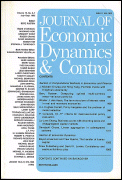 |
Available
via: 
Click
here for pdf file |
|





